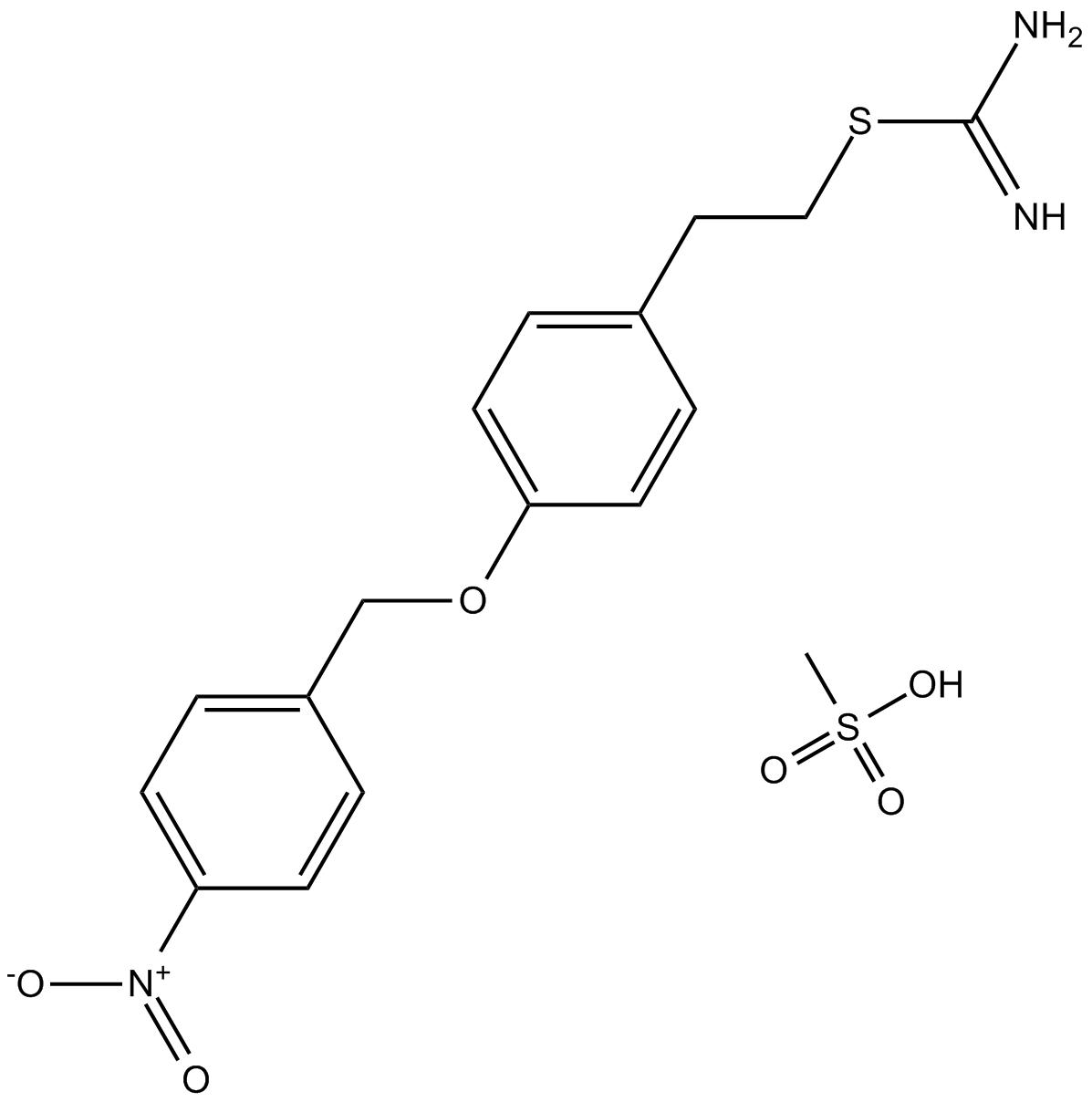KB-R7943 mesylate |
| Catalog No.GC15684 |
An inhibitor of the reverse Na+/Ca2+ exchanger
Products are for research use only. Not for human use. We do not sell to patients.

Cas No.: 182004-65-5
Sample solution is provided at 25 µL, 10mM.
KB-R7943 mesylate is a potent and selective inhibitor of Na+/Ca2+ exchanger (NCE) with IC50 value of 0.7 μM.
NCE is an antiporter membrane protein that exchanges 3 Na+ for 1 Ca2+ and can function to cause Ca2+ accumulation (reverse mode) or Ca2+ extrusion (forward mode) depending on the concentrations of each ion on either side of the membrane and on the membrane potential [1].
In transfected Chinese hamster ovary (CHO) cells expressing NCE, KB-R7943 (10 μM) inhibited NCX activity at high (140mM) but not at low (10mM) cytosolic Na+ concentrations [2].
In cultured rat forebrain neurons loaded with glutamate- (3 μM), N-methyl-D-aspartate- (30 μM), kainate- (100 μM) or KCl- (50 mM) induced [Ca2+] transients, KBR7943 inhibited these transients with IC50 values of 6.6, 8.2, 5.2 and 2.9 μM, respectively. While, KB-R7943 didn't inhibit glutamate-induced neuronal injury [1]. In mice with ischemic acute renal failure (ARF), KB-R7943 significantly decreased endothelin-1 (ET-1) in the kidney and relieved the ARF-induced renal dysfunction [3].
References:
[1]. Hoyt KR, Arden SR, Aizenman E, et al. Reverse Na+/Ca2+ exchange contributes to glutamate-induced intracellular Ca2+ concentration increases in cultured rat forebrain neurons. Mol Pharmacol, 1998, 53(4): 742-749.
[2]. Condrescu M, Reeves JP. Inhibition of sodium-calcium exchange by KB-R7943: Dodecylamine and sphingosine in transfected Chinese hamster ovary cells. Cell Calcium, 2010, 47(5): 404-411.
[3]. Yamashita J, Ogata M, Takaoka M, et al. KB-R7943, a selective Na+/Ca2+ exchange inhibitor, protects against ischemic acute renal failure in mice by inhibiting renal endothelin-1 overproduction. J Cardiovasc Pharmacol, 2001, 37(3): 271-279.
Average Rating: 5 (Based on Reviews and 30 reference(s) in Google Scholar.)
GLPBIO products are for RESEARCH USE ONLY. Please make sure your review or question is research based.
Required fields are marked with *




















